The management of cloud-based applications is no longer limited to choosing the compute to be provisioned and setting up some servers. Applications are geographically dispersed, might run in containers or serverless application structures, grow and contract in reaction to necessity, and should have high requirements of reliability, security, and cost. Manual systems and fixed rules are not enough as infrastructure gets complex.
In comes AI powered platforms. These tools automate, become both intelligent and predictive, management fundamentals, including auto-scaling, performance optimization, incident detection, cost governance, and deployment governance. They eliminate human labor and increase trustworthiness and open up more efficiency of operations. Everybody operating cloud applications must learn about the value of AI-powered platforms.
The Modern Challenge of Managing Cloud Applications
Contemporary cloud applications are generally:
- Be executed in form of multiple microservices or serverless functions
- Apply container orchestration, or platform-as-a-service infrastructure
- Need dynamic scaling of unexpected spikes in loads
- Rely on various clouds or mixed systems
- Touch sensitive user data and have to be compliant
- Need continuous deployment (CI/CD) pipelines and fast feature releases
Manual management of all the foregoing entails dealing with performance degradation, resource adjustment, reactionary catching of alerts, corrections of misconfigurations, chasing away cost overruns. To avoid resource shortages that cause outages, organizations tend to overprovision resources, thereby causing a waste of spend or fall short on resources, creating slow response times.
Set thresholds, manual authorization of deployments, and cost reviews scheduled are no longer sufficient. This complexity would require platforms that insert intelligence at all levels of application management.
How AI Platforms Transform Cloud App Operations
The platforms powered by AI offer:
- Machine learning approaches to predictively auto-scale resources based on projecting load ahead of time
- Smart anomaly detection, detection of performance problems or errors at an early stage based on behavioral baselines
- AIOps features, or the ability to correlate log, metrics and traces events to identify root causes
- Cost intelligence, identification of cost drifts, idle resource, and savings recommendation
- Autonomous CI/CD choices, including the proposal of rollback or the signing off the deployment owing to the performance forecasts
By combining these functions, the AI platforms will automate repetitive work, shorten the time it takes to respond in an incident situation, and transform teams into optimization teams.
Core Benefits of AI in Cloud Application Management
1. Enhanced Reliability and Uptime
AI platforms examine how machines are behaving in real time and help identify the onset of a problem, before it becomes serious- latency is higher, errors are higher, or the CPU is misbehaving. They can alert engineers or trigger automated mitigation (e.g. scaling, instance restart) before downtime occurs.
2. Smart Auto‑Scaling
Instead of using static rules (e.g. add servers when CPU > 70%), AI forecasts demand curves from historical data, seasonal trends or release events and scales the infrastructure preemptively. This prevents spikes in the latency and gives optimized performance in a rush of traffic.
3. Reduced Operational Cost
The AI-based costs suggestions provide the managers with alerts about the resource underutilization, too large instances, or overprovisioned services. Most AI platforms are capable of automatically shutting down idle compute, or shifting workloads to less expensive capacity.
4. Faster Incident Resolution through AIOps
Machine learning enables correlation of logs, traces and metrics performed by AI systems. When an incident occurs, the tool presents likely root causes, affected services, and possible fixes—reducing mean time to resolution (MTTR).
5. Better CI/CD Governance
There are AI platforms that are used as part of build/deploy pipelines. They are able to recommend whether deployments are safe to be deployed or they should be unwound either as per the forecasted impact on the performance or actual history of anomalies.
Real‑World Example: E‑commerce Platform during a Flash Sale
Consider an e-commerce start-up gearing up the flash sale. The traffic will increase ten times in several minutes. Without AI:
- Engineers deploy more servers manually
- A load balancer may not distribute uniformly
- Mahaul teams run to keep up with the latency or errors
- Sale of second hand servers leave unused servers online wasting budget
An AI platform:
- Machine learning predicts the surge and reserves the capacity before the surge occurs
- Dynamic response based on response times and server health load distribution
- Anomaly detection warns engineers when latency starts to increase–and auto-scaling will take effect immediately
- Servers not working automatically shut down after the sale
The outcome: seamless operation, zero operation downtime, and no resources going to waste.
When Traditional Management Fails
Following are typical situations that static tools fail to capture:
- Sudden increases in traffic mean that systems are under provisioned and either respond slowly or experience errors
- Minor performance defects slide below the threshold levels and gradually lead to a decay in the situation later on
- Without real-time visibility or advice, cost limits are surpassed
- Regular releases come in with regressions that we fail to identify as the alerts are thresholds not hit until the consumers complain
In each of these applications, AI platforms far exceed the performance of manual or rule-based systems applied in continual learning of baseline behavior and adaptation to changing conditions.
Types of AI Tools for Cloud App Management
The key types of AI-enabled tools can be found below:
- Forecast engines of predictive autoscaling (memory, CPU, concurrency requirements)
- Systems to detect anomalies (the performance of tracks, latency, the trend of errors)
- AIOps (map many data streams to identify root causes)
- Cloud cost optimization engines (Waste identification, spend projection, etc.)
- CI/CD support tools (propose safe deployments, auto-rollback, testing of performance)
Most platforms integrate a number of these into a single dashboard or API.
Manual vs AI‑Driven Cloud Application Management
| Management Task | Traditional Manual Approach | AI‑Driven Platform Approach |
|---|---|---|
| Auto‑Scaling Decision | Static CPU thresholds | Forecast-based predictive scaling |
| Monitoring & Alerting | Fixed thresholds, reactive | Baseline behavior plus anomaly detection |
| Incident Diagnosis | Manual root-cause tracing | Automated log/metrics correlation via AIOps |
| Cost Control | Periodic budget reviews | Real-time idle resource detection and rightsizing |
| Deployment Approval | Manual QA and checklists | AI-suggested deployment approval or rollback |
| Performance Tuning | Post-mortem tuning | Continuous optimization based on observed usage |
Industry Scenarios Where AI Platforms Shine
SaaS Applications
In the case of SaaS businesses with international clients, AI platforms manage their shared performance regardless of the load, streamline backend expenses, and uncover any problems before affecting the customer.
Financial & Regulated Businesses
In regulated industries, the AI platforms watch out on application behavior to identify abnormalities early enough, allow compliance enforces and build an audit trail. AIOps assists in finding faster problems in complicated systems.
High‑growth Startups
Rapidly growing startups are finding that their container orchestration, coupled to autoscaling provided by AI, allows them to scale to meet demand without assembling sizeable DevOps staff–or facing chance of cost overruns.
Media Streaming or Real‑Time Apps
Low latency is important in live or near-real-time apps. The AI platforms dynamically distribute traffic, auto-scale edge servers, and are alerted to degrading performance before they impact on user experience.
Why AI Platforms Are a Necessity in 2025
These trends have increased standards of application management:
- Microservices and containers and serverless make operations harder.
- Distributed systems that are API-first cover several services and environments
- DevOps velocity requires non-stop deployment with few obstacles in the process
- Cost pressure implies that it is no longer acceptable to have unused resources
- A competitive digital environment necessitates improved performance beyond ever before
Static tools and manual management of cloud apps are not a possibility anymore. AI platforms fill the gap- they offer automation, predictive intelligence and orchestration under a single roof.
Leading Platforms, Features & Comparison
1. Google Cloud Platform (GCP) with Vertex AI
Google cloud provides end-to-end visibility and control by integrating native AI tools with the management of applications. Vertex AI is integrated with such cloud services as the Compute Engine, the Cloud Run, and GKE.
Key Capabilities:
- Predictive autoscaling of workloads and server fleets in ML-powered way
- Latency, throughput and error rates insights with AI assistance
- Integration with logging and tracing to help find root-cause
Best For: Cloud native AI-first teams developing high throughput, data driven applications.
2. Amazon Web Services (AWS) with SageMaker and DevOps Guru
AWS also provides a full platform to train AI models( SageMaker ) and an introspective tool to identify performance anomalies and provide a remediation option (DevOps Guru).
Key Capabilities:
- EC2, lambda, and container EC2 Workloads Forecast-based autoscaling
- Database, API latency Anomaly detection over the error rates
- Deployment with CI/CD pipelines that incorporate SageMaker- backed decision logic
Best For: High volume serverless or microservices settings that must predictably operate and analyze incidents.
3. Microsoft Azure with Azure Machine Learning and Azure Monitor / Advisor
Microsoft offers a unified experience in which models are trained using Azure ML and applied using Azure Monitor / Advisor with AI concepts across performance, cost optimization, and security alerts.
Key Capabilities:
- AI-based performance diagnostics and auto‑tuning suggestions
- Multi-cloud or hybrid policy enforcement
- Machine learning-based Cost forecasting and Usage anomaly Notification
Best For: Organizations that apply integrated Microsoft stacks and hybrid cloud-based applications.
4. Datadog (with AI Observability and Watchdog)
Datadog provides AI-powered full-stack observability. Its Watchdog engine uses machine learning to identify abnormal trends in logs, traces, and metrics.
Key Capabilities:
- Root‑cause correlation and anomaly detection in real time
- Smart grouping and noise-reducing route of alerts
- CI/CD Integrations for deployment context (e.g GitHub, Jenkins)
Best For: DevOps teams who need a common set of observability in mixed environments.
5. Dynatrace (Davis AI Engine)
Dynatrace provides a combination through its Davis engine of unified application performance monitoring, infrastructure monitoring and AI-driven automation. It auto maps on full stack topology.
Key Capabilities:
- Causal analysis of root causes in automatic anomaly detection
- Automation of events (restart services, notify teams etc.)
- Kubernetes, microservices, cloud VMs, and serverless observability
Best For: Complex business scenarios with proactive observability and self-healing.
6. New Relic (“Applied Intelligence”)
New Relic provides anomaly detection, incident automation and performance recommendations on top of its telemetry platform powered by AI-based intelligence.
Key Capabilities:
- AI powered problems on latency, error rate, throughput
- Grouping and prediction of severity of incidences
- Deployment impact analysis connected with CI/CD pipelines
Best For: Applications of developers and application teams that require code-level insight in conjunction with operation intelligence.
7. Harness.io (AI-Powered CI/CD + Cost Governance)
Harness introduces AI into delivery pipelines with predictive verification, automated rollback, and cloud cost control that is integrated into the flow of delivery.
Key Capabilities:
- Intelligent pre-promotion of deployments
- Automatic rollback in case performance becomes worse after deploying
- Constant cost monitoring and sensible suggestions about right-sizing infrastructure
Best For: CI/CD first teams and DevOps engineers scaling their large application lifecycles.
8. nOps.io (AWS Cost and Compliance AI)
nOps specializes in AWS based environments and provides AI based cost optimization, governance, compliance checks and deployment insights.
Key Capabilities:
- Anomaly detection of cost in real-time
- Recommendations to infrastructure with AWS Bestpractice
- CI/CD pipeline integrations for compliant deployments
Best For: Startups, or teams using AWS who desired to have their FinOps and compliance automation.
9. IBM WatsonX / Watson AIOps
IBM WatsonX business model covers the entire AI model development lifecycle. Watson AIOps adds visibility of application and root cause analyzing with NLP and ML.
Key Capabilities:
- Natural language processing log and metric analysis
- Automatic ticket creation and predictive issues detection
- Governance and audit facilitation through continuous monitoring
Best For: Controlled business that requires automation of the compliance process and performance insights using AI.
Comparison of Leading AI Platforms for Cloud App Management
| Platform | Auto‑Scaling Support | Anomaly Detection AI | CI/CD Integration | Cost Intelligence | Best Suited For |
|---|---|---|---|---|---|
| GCP + Vertex AI | ✅ | ✅ | ✅ | ✅ | AI-first SaaS, predictive scaling needs |
| AWS + DevOps Guru & SageMaker | ✅ | ✅ | ✅ | ✅ | Microservice/serverless environments |
| Azure ML + Monitor/Advisor | ✅ | ✅ | ✅ | ✅ | Hybrid enterprise apps on Microsoft stack |
| Datadog + Watchdog | ✅ | ✅ | ✅ | ✅ | Observability-centric DevOps teams |
| Dynatrace (Davis AI) | ✅ | ✅ | ✅ | ✅ | Enterprise-grade observability and AIOps |
| New Relic Applied Intelligence | ✅ | ✅ | ✅ | ✅ | Full-stack code + operations insights |
| Harness.io | ✅ | ✅ | ✅ | ✅ | CI/CD-first automation with cost control |
| nOps.io | ✅ | ✅ | ✅ | ✅ | AWS cost/compliance-driven optimization |
| IBM WatsonX / Watson AIOps | ✅ | ✅ | ✅ | ✅ | Regulated industries and governance AI |
| FlyAPS (custom solutions) | ✅ (custom project) | ✅ (pa ckage build) | ✅ (integration) | ✅ (tailored) | Custom AI DevOps for bespoke requirements |
Use Case Highlights Across Platforms
- E Commerce Flash sales: Detect demand spikes in advance and auto‑scale with AWS + DevOps Guru. Datadog monitors performance and proposes to rollback when there has been a sudden increase in errors.
- Healthcare SaaS: Azure ML + Monitor is useful when it comes to monitoring compliance, detection of anomalies, and cost warnings. It is very suitable when there is controlled data.
- Media streaming: Harness also manages the deployment pipelines, validate performance once released in production, and incorporate cost intelligence to avoid overprovision.
- Enterprise hybrid cloud: Mult-Cloud infrastructure is automatically monitored by Dynatrace or IBM WatsonX, anomalies are identified, cross-service issue correlation is provided.
Summary
Managing cloud applications requires the use of AI platforms in the current age of distributed systems, continuous deliveries, and dynamic workloads. They offer intelligent auto-scaling, anomaly detection, cost intelligence, deployment verification or automation which the static tools do not have.
Regardless of whether performance observability, rapid deployment, cost control, or compliance is your priority area, an AI platform is available that best suits your needs. Each of the GCP, AWS, Azure, IBM, Datadog, New Relic, Harness, nOps, and FlyAPS delivers its combination of capabilities.
The appropriate procedure of the tool-cloud infrastructure, team workflow, and business objective have to be in line with each other. By 2025 and beyond, cloud environments are only set to become larger and more complex and with AI-based platforms, businesses can enjoy the necessary operational resilience and efficiency that comes with such environments.
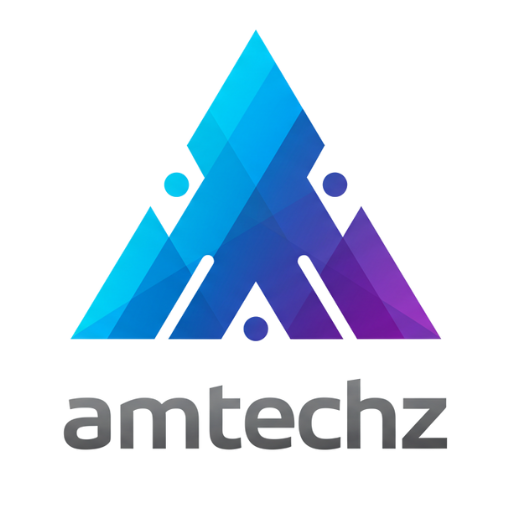

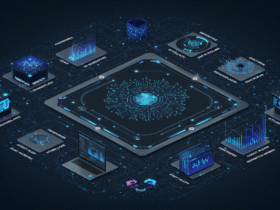
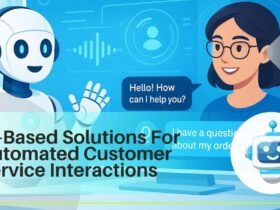
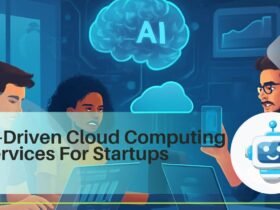


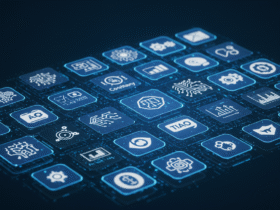

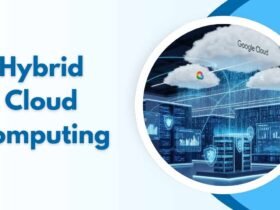
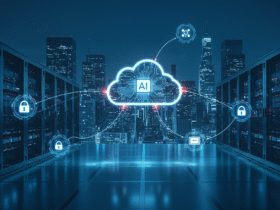

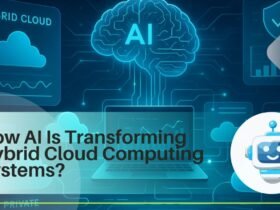
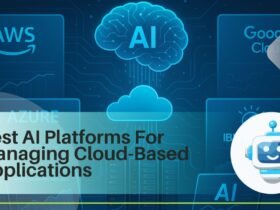
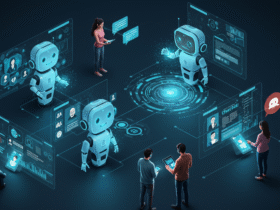
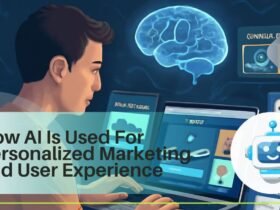
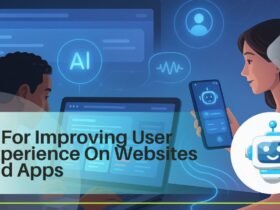
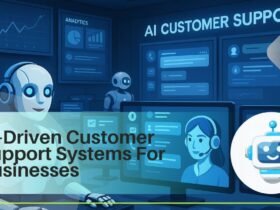

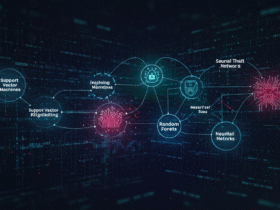




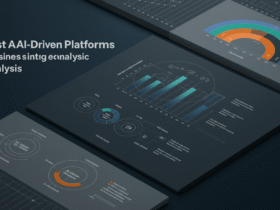


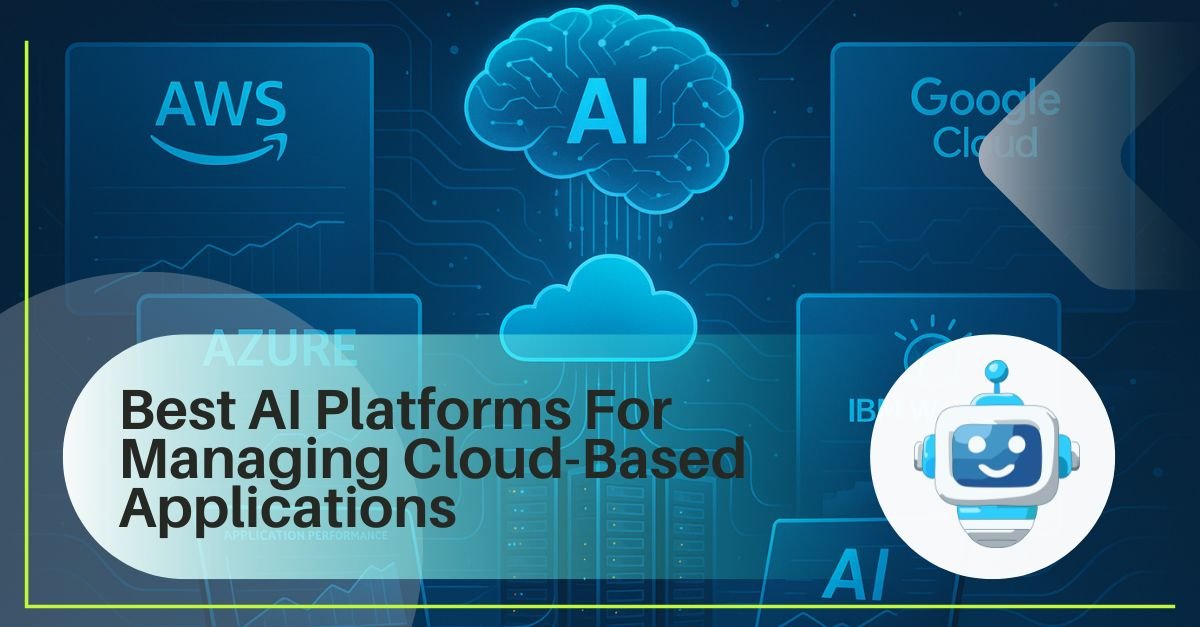

1 Comment